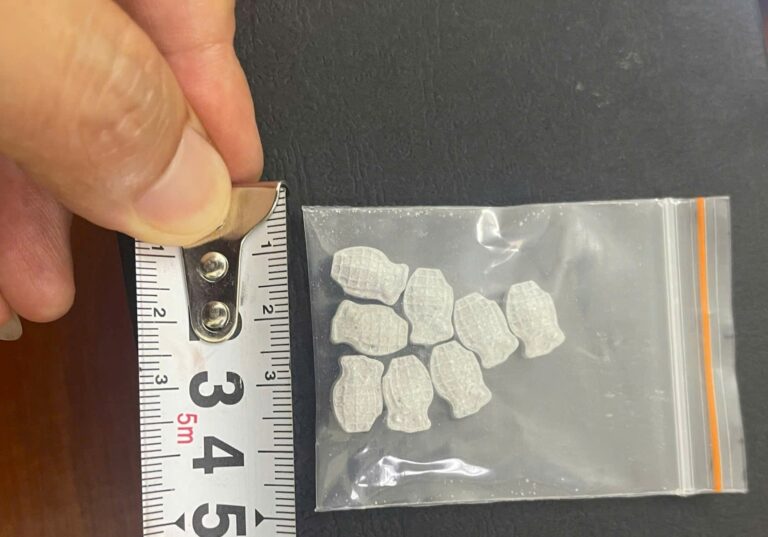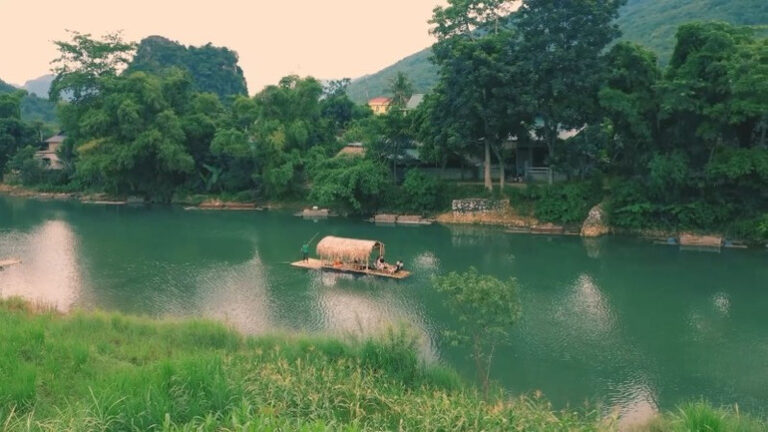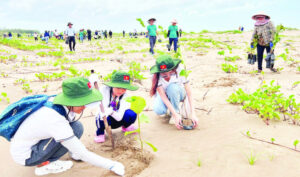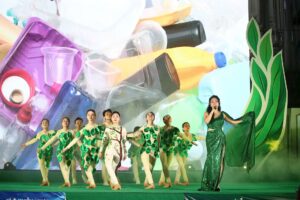As the sunshine of a late summer afternoon waned, Lô Thị Hoa and her sister, looking fresh in traditional Thái costumes, prepared food to welcome guests to their stilt house in Nưa Village.
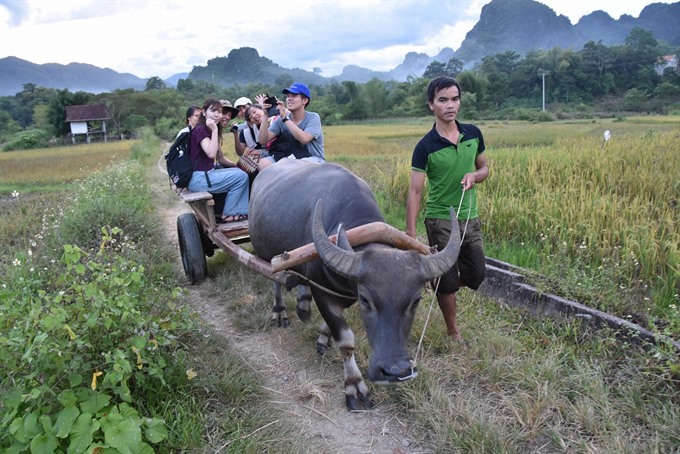
Japanese aid: Raito Hotta (in blue cap) and his Japanese friends enjoy a buffalo carriage in Nưa Village. — VNS Photo Ando Katsuhiro
Inside the kitchen, three women in Hoa’s group were cooking food in several big pots on firewood while others were busy boiling water, cleaning vegetables and marinating meat. A dozen traditional dishes had to be served in just an hour.
Hoa knew everything should be prepared well as her Hoa Thụ (Thụ Flower) home-stay in the village in the central province of Nghệ An’s Yên Khê Commune. She would help host 40 guests for dinner and about 20 would stay overnight.
As the guests arrived, Hoa and other women welcomed them with cheerful salutes in Thái language and the soft and loud rymthm of the gongs. Guests were invited to wash their hands and face with the cool water from stream and relax in the old stilt house.
Right on time dinner was served. All dishes were local specialities that come from the forest and the river.
Dishes included cơm lam (sticky rice cooked in bamboo stick), mọc (a special mixture of meat, vegetables and sticky rice which is covered inside banana leaves and steamed), stir-fried dớn (fern) vegetables, banana flower salad, boiled bamboo shoots, charcoal grilled chicken marinated with honey and the whole grilled mát fish. All were eye-catching and skilfully displayed on bamboo-woven trays lined with banana leaves.
"We have restored traditional Thái dishes and serve them in the old way, as how our ancestors did. For example, they ate healthy so we also learned to use less fat when cooking by steaming or grilling,” Hoa said.
"The mát fish are caught in the nearby stream, while banana flowers and vegetables are picked from the garden. Free range chickens and pigs are also raised at home, so whenever we have guests, we can serve local dishes right away,” she added.
As the guests enjoy traditional Thái cuisine, Hoa and her village sisters prepare for an art performance with folk songs and dances. Guests were also invited to join the bamboo dance, drink jar wine through pipes and have a cotton cord tied around their wrists for luck and happiness.
The night ended with the tipsy feeling of the wine taste and the bustling laughs of singing and dancing, that maded the guests go into a deep sleep together on the wooden floor of the house.
Hoa’s house is one of three home-stays in Nưa Village that are part of the Japan International Co-operation Agency (JICA)’s project for livelihood diversification through heritage tourism in remote agriculture and fisheries villages.
Her house actually started to receive guest since 2011 when a group of tourists came to the village and looked for accommodation. Hoa opened her door for them and let them stay with her family and enjoy the local dishes and learn about the culture of Thái people.
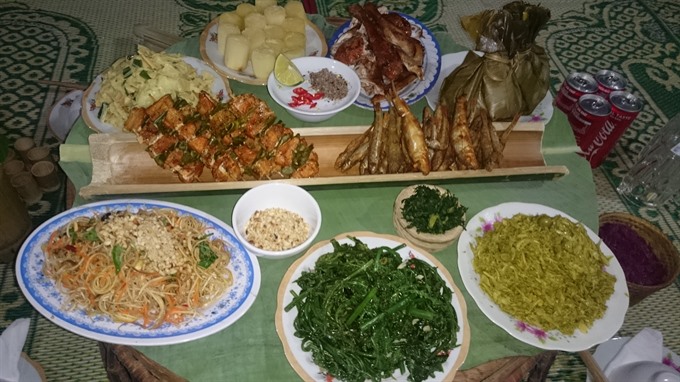
Not so hot: A typical Thái meal prepared by the community-based tourism group in Nưa Village. — VNS Photo Hồng Minh
Hoa said before this, villagers only offered what visitors asked for. But with the help from JICA’s expert, she learned the first lessons about community-based tourism, that natural landscapes and community are the key.
Under JICA’s project, Hoa and other villagers were sent to learn from other Thái village in the northern province of Hòa Bình’s Mai Châu District. They were taught for the first time what tourism is, who tourists are, what the relationship between the host and the guests can be and how to maintain tradition along with with promoting tourism.
“We started to think about our potentials and have ideas to apply into our Nưa Village,” Hoa said.

Real Thai: Thái women in traditional costumes perform a folk dance. — VNS Photo Việt Cường
Taking advantages of local landscapes, the farmer-turn-tour organisers started to put other attractions in for guests to choose from, such as swimming at the nearby Mọc Stream, enjoying Khe Kèm Waterfall, riding on carriage pulled by buffalo or cow, catching fish by traditional tools, experiencing Thái people’s farming as planting and weeding, and taking part in a wedding ceremony.
The community-based tourism group in Nưa Village were trained to cook and decorate Thái dishes traditionally, but still elegantly. A group of song and dance performers was also set up, attracting more local women to join in.
Vương Thị Thuận, head of the Thái Folk Songs Club in the village, said that many members of her club were hesitant to sing before.
“They were afraid that no one could understand the lyrics of Thai songs so they refused to sing,” Thuận said, “But now they understand that the guests like the performance and by singing the songs, they also help preserve the traditional culture.”
“Singing at night helps us forget all hardship of day work,” Thuận said.
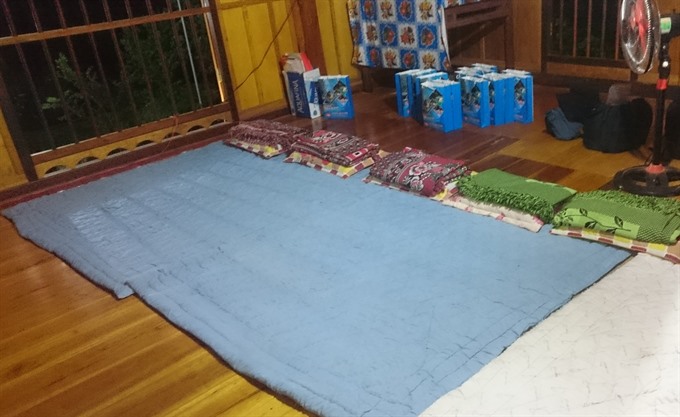
Comfortable: Clean and warm bedding offers a good night’s sleep. — VNS Photo Hồng Minh
Japanese student Raito Hotta said that he loved the friendly and smiley people in Nưa Village and would definitely come back in future.
“I love the afternoon on the field. The dark mountains cover the rice fields, kitchen smoke from the floor spreads out in the village,” he said.
“The food is excellent with materials easy to find around the village that I’ve never seen and tasted before,” he said, adding that he loved the purple sticky rice the most.
In September last year, with the help of a JICA expert, Hoa and other partner home-stays built clean toilets next to their houses to better serve guests.
“In order not to break the natural landscape, the substructure has only the inner core of concrete and standard sanitary equipment, the roof is covered with palm leaves and roads are paved by the pebbles taken from the local Giăng River,” Hoa said, adding that the toilets helped guests feel more comfortable when staying in.
The toilets also have built-in bathroom with water pumped directly from the nearby stream.
“We are keeping the surrounding as natural as we can following advices from JICA expert as we know that is importnant to community-based tourism,” she said.
Last year, three homestays in Nưa Village welcomed more than 900 visitors, and since the beginning of this year, there have been more than 1,200. Price for a meal varies according to demand. It can range from VNĐ80,000-200,000 per head while an overnight stay is at VNĐ60,000.
Hoa said that within two years, she had paid off her bank debt of VNĐ50 million (US$2,200) thanks to tourism.
"In the past year, my family planted one tonne of rice a year, earning only VNĐ6 million. But since I became involved in community-based tourism, I earn about $3 million a month, which is more profitable than farming," Hoa said, adding that she had suggested more people in the village to join in community-based tourism.
However, there are difficulties promoting community-based tourism in Nưa Village as it is located in a remote area about 130 kilometres from Vinh City.
“Despite potential, the number of tourists is limited and little promotion has been carried out,” said Vi Văn Giao, the village chief.
Giao said that the village was doing its best to preserve traditional customs, especially folk songs, to contribute to community-based tourism.
Local people also face difficulties in terms of capital as there is no credit programme for community tourism.
"We need long-term loans with low interest rates because promoting tourism takes time," Hoa said.
She still hope more people in Nưa Village will join in promoting tourism.
“I don’t mind the competition after more people join in as I believe community-based tourism will help increase villagers’ income and raise awareness of locals about environmental protection and traditional preservation,” she said. — VNS
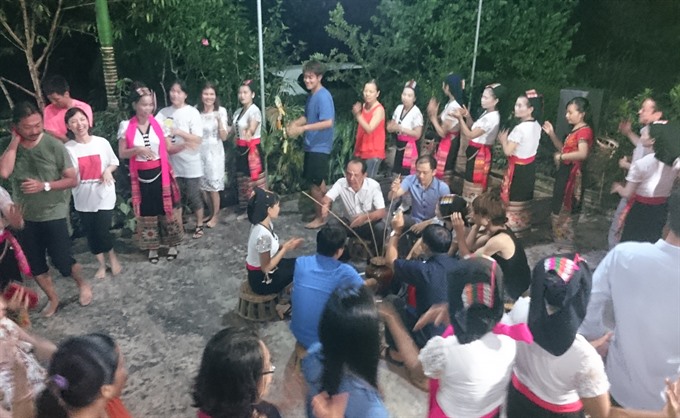
Party time: Guests and hosts enjoy dancing and drinking wine. — VNS Photo Hồng Minh
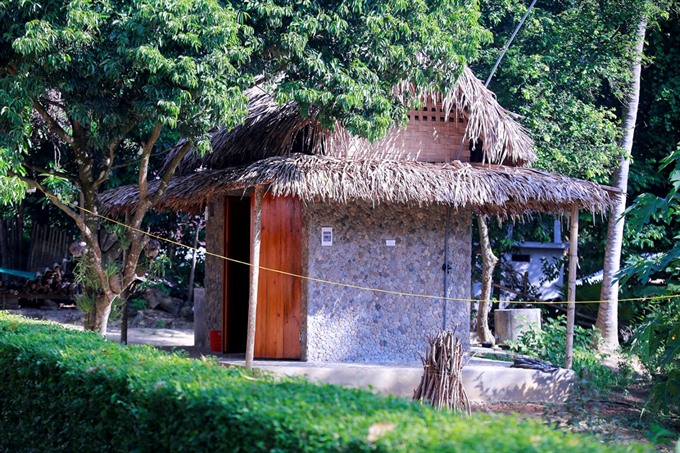
Modern loo: A toilet is covered with leaves and walls are paved with pebbles taken from the local Giăng River. — VNS Photo Việt Cường


